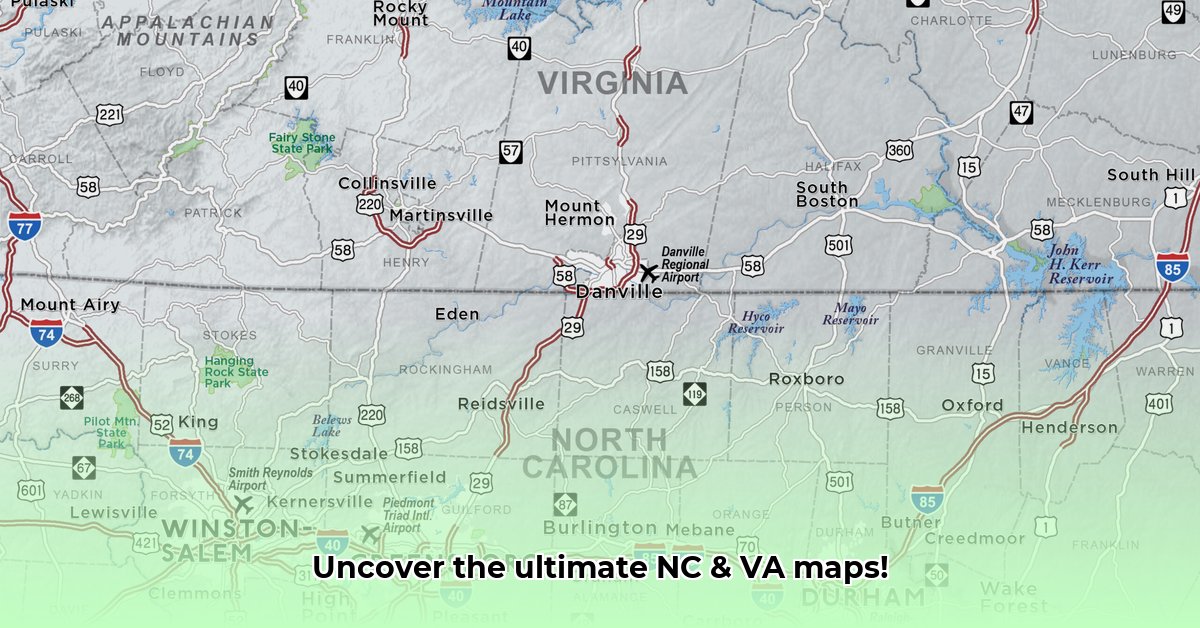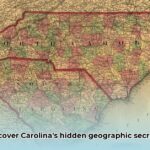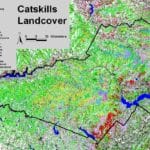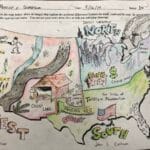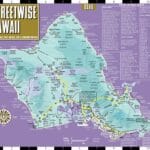Are you searching for the perfect map of North Carolina and Virginia? The quest can be surprisingly complex. Perhaps you require detailed directions for an upcoming road trip, or perhaps you’re a history enthusiast eager to trace the evolution of these states. No matter what you need, this guide provides a curated pathway through the vast world of maps, from everyday road atlases to rare historical documents. We’ll illuminate the strengths and weaknesses of different map types and share insider tips to help you pinpoint the ideal map for your specific goals. Whether you’re planning a vacation, conducting academic research, or simply satisfying your curiosity, prepare to unlock the secrets of map reading and find precisely what you’re looking for! For broader regional context, check out this [Southeast map](https://www.lolaapp.com/map-of-the-southeast-states/).
Unveiling the Perfect Map of NC and VA: A Comprehensive Guide
Sifting through the myriad map options for North Carolina and Virginia can quickly become overwhelming. The sheer variety, ranging from basic road maps suited for weekend getaways to intricate historical charts brimming with centuries of stories, presents both exciting possibilities and potential pitfalls. This guide is designed to navigate this cartographic jungle, ensuring you discover the map that aligns perfectly with your needs, including specialized maps such as land survey plats or geological surveys.
Navigating the Challenges of Map Selection
The abundance of available maps for North Carolina and Virginia presents a double-edged sword. While a wide selection is certainly beneficial, it also complicates the search for the perfect map. Where should you even begin, and what common errors should you avoid along the way?
One of the primary obstacles is the absence of a single, comprehensive, high-resolution digital map encompassing both states. While Google Maps is a convenient tool for routine navigation, it often lacks the granular detail required for specialized purposes. Niche mapping websites may offer finely detailed road networks, but frequently neglect the historical context that imbues a map with deeper meaning. Then there are the historical archives, overflowing with invaluable historical maps that are often difficult to physically access and interpret effectively.
Modern vs. Historical Maps: Striking a Balance
Consider the distinction this way: modern maps are akin to GPS systems, designed for efficient point-to-point navigation. Historical maps, on the other hand, resemble antique compasses, guiding you through the historical layers embedded within the land itself. They reveal shifting borders, evolving settlements, and the very progression of geographic understanding over time. Each map type serves a distinct purpose. This is especially relevant when studying obsolete topographical maps for geological studies or simply indulging a passion for history.
Envision attempting to plan a scenic route along the Blue Ridge Mountains using an antiquated map. It might inadvertently lead you down a long-defunct wagon trail! This perfectly illustrates the critical importance of selecting the proper map to suit your intended use.
Who Benefits from Detailed NC and VA Maps?
A diverse range of individuals and organizations rely on accurate and readily available maps of North Carolina and Virginia. Consider the following:
- Educational Institutions (Schools and Universities): Require access to high-resolution maps (both current and historical) alongside interactive digital resources to support educational programs and research initiatives.
- Tourism and Hospitality Sector: Benefit from user-friendly digital maps that showcase points of interest, provide dependable navigation, and enhance overall visitor experiences.
- Government Agencies (State and Local): Depend on comprehensive geospatial databases and standardized data formats to inform urban planning projects, resource management strategies, and emergency response protocols.
- Real Estate Professionals: Benefit from access to parcel maps, zoning maps, and flood zone maps to better serve clients.
A Step-by-Step Guide to Map Perfection
The process of finding your ideal map demands thoughtful deliberation. Here’s a structured approach to simplify the process:
- Define Your Objective: What specific purpose will the map serve? Is it for planning a scenic road trip, researching ancestral land holdings, or something else entirely? This will shape the required level of detail.
- Select a Map Type: Do you need a contemporary road map or a historical atlas? A physical map or a digital interface? Evaluate the level of detail and the format that best suits your project.
- Explore Available Resources: Start with familiar online tools like Google Maps. Then, delve into specialized mapping websites and explore historical archives—these often contain a wealth of information.
- Assess Accuracy and Reliability: Always check the map’s publication date and source to confirm its accuracy. Maps evolve over time, and the map’s origin provides critical context.
- Understand Licensing and Usage: Before using or sharing any map, ensure you’re aware of any copyright restrictions or usage limitations. Certain maps may have specific conditions attached to their use.
- Check for Updates: Especially important for road maps, check if the map has been updated recently. Roads and points of interest can change quickly.
Future Innovations in Mapping
Ideally, the future holds a centralized, user-friendly digital platform that integrates both modern and historical maps of North Carolina and Virginia. This ambitious vision would necessitate collaboration among universities, government entities, private mapping firms, and independent researchers. Imagine the possibilities such a resource could unlock!
This goes beyond mere convenience; it’s about safeguarding historical knowledge and facilitating informed decision-making across multiple sectors within both states. The ongoing effort to create a more extensive and accessible map collection is a collaborative endeavor in which everyone can play a role. The pursuit of the perfect map continues! What steps can local communities undertake to advance this effort?
Locating High-Resolution Historical Maps of Virginia and North Carolina Online
Intrigued by the prospect of exploring the past through vintage maps of Virginia and North Carolina? Let’s embark on a journey of discovery! The search for high-resolution historical maps online can feel like a daunting task, but with the right strategies, you can uncover hidden cartographic treasures.
Essential Resources for Online Chart Discovery
The United States Geological Survey (USGS) stands out as a primary repository for historical topographic maps. Their Historical Topographic Map Collection (HTMC) and the intuitive TopoView interface place a wealth of geographic information directly at your fingertips. But are these resources truly high resolution? The answer depends on the age of the map and the methods used in its original creation. While older maps hold immense historical value, they may lack the intricate detail found in more recent surveys.
Keep in mind that the quality of historical maps can vary significantly. Early mapmakers relied on less precise surveying techniques, which inevitably impacted the accuracy and resolution of their work. Later maps, particularly those digitized using modern technology, tend to offer superior clarity. Think of it as comparing a hand-drawn sketch to a high-definition satellite image – the difference in clarity is striking. Are you familiar with the map projections (the methods used to represent the Earth’s curved surface on a flat plane) employed in these historical maps and how they might influence accuracy?
Effective Search Strategies for Map Retrieval
To effectively locate high-resolution historical maps of Virginia and North Carolina online, adopt a multifaceted approach. Don’t confine yourself to a single search engine or platform.
- Begin with the USGS: TopoView (https://ngmdb.usgs.gov/topoview/viewer/) is your ideal starting point. Use the interactive search bar to pinpoint specific regions within Virginia and North Carolina. Experiment with diverse keywords, date ranges, and map types (e.g., topographic, cadastral, geological).
- Explore Library Archives: Numerous university and state libraries actively digitize their map collections. Explore the websites of prominent institutions in both states; they often feature readily searchable online catalogs. These digital archives frequently hold undiscovered gems.
- Utilize Specialized Archives: Organizations dedicated to local history, genealogy, or regional studies may maintain specialized digital map repositories. A targeted internet search will reveal a wealth of local and regional resources.
- Leverage the Power of Google: While specialized databases are generally more effective, Google Images remains a surprisingly valuable tool. Refine your results by using search terms such as “high-resolution historical map,” combined with specific locations and relevant dates.
- Check Government Repositories: State and federal government archives may contain maps that are not available elsewhere. These often include maps relating to infrastructure projects.
Acknowledging Limitations and Contextual Considerations
While online resources provide unprecedented access to historical maps, certain challenges persist. Metadata—the descriptive information associated with each map—is not always consistent or comprehensive. Some maps lack essential details about their creation, which can limit your ability to assess their accuracy and reliability.
Furthermore, the sheer volume of available maps presents a logistical challenge. The HTMC’s size is often cited inconsistently, ranging from 178,000 to 190,000 maps, highlighting the ongoing complexities of accurately cataloging vast historical collections. Long-term digital preservation of these files remains a critical concern. As technology rapidly advances, ensuring continued access to these resources requires sustained effort.
Always remember that even a high-resolution scan of a historical map has inherent limitations. Historical maps reflect the knowledge, technology, and biases of their era. They may contain inaccuracies or omit details that seem significant today. Understanding the historical context of a map is just as important as its visual resolution, because context profoundly influences interpretation. Always consider the map’s intended purpose, its creator, and the technologies used in its creation.
Arm yourself with this guide, and confidently navigate the world of online historical maps. Happy exploring!
Harnessing Historical Maps of Virginia and North Carolina for Genealogical Research
Do you aspire to trace your family
- SYBAU See You Baby Meaning: Gen Z Slang Evolves - July 1, 2025
- Unlock Your Inner Youth: Lifestyle Secrets for a Vibrant Life - July 1, 2025
- Decode SYBAU Meaning: Gen Z Slang Explained - July 1, 2025
